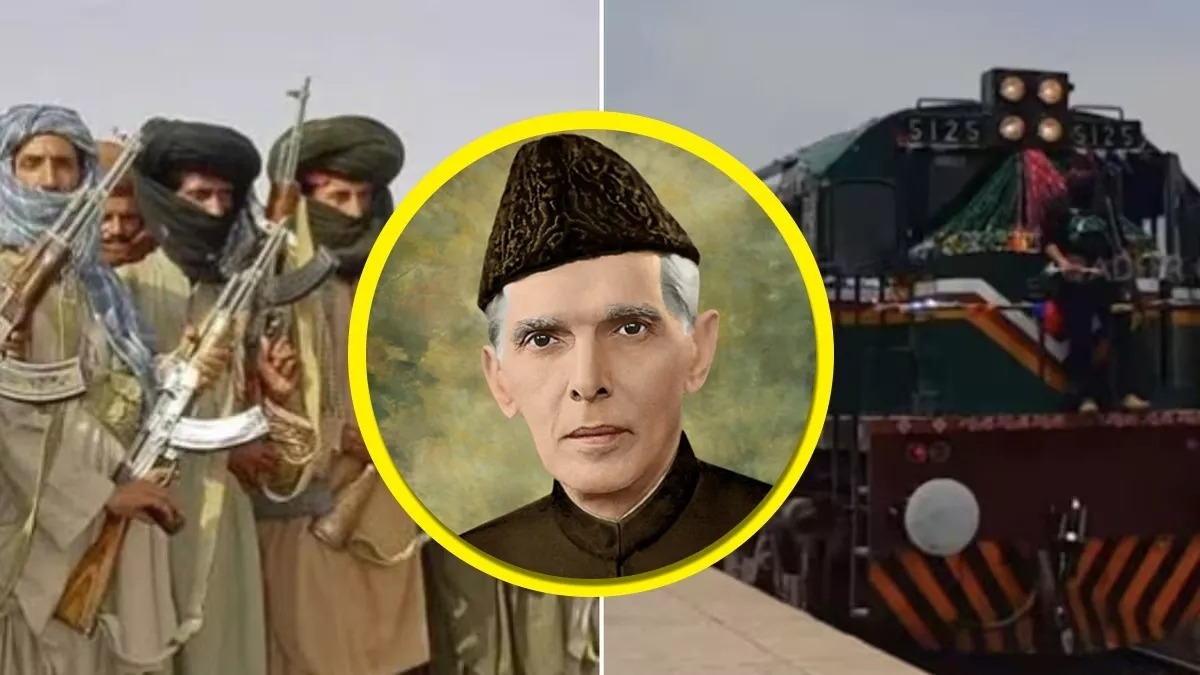
Balochistan is the largest province among the four provinces of Pakistan but it has the least population. Balochistan has rarely seen peace and even after so many years, development work has not been done here. Terrorists of the Balochistan Liberation Army (BLA) hijacked a train in Pakistan on March 11.
Now the question arises that why did the BLA rebels hijack the train and take 100 people including security personnel hostage and what is the main reason for their rebellion? The reason for this rebellion is believed to be the betrayal of the Baloch people by Pakistan's founder Mohammad Ali Jinnah.
When did the Baloch people revolt?
- Since 1948, Baloch nationalists have taken up arms against the Pakistani state.
- Balochistan has seen periods of violent independence movements in 1958–59, 1962–63 and 1973–77.
- The most recent phase of the movement has been going on since 2003.
- On 11 March 2025, BLA militants stopped the Quetta–Peshawar Jaffar Express and took hundreds of passengers hostage.
- On Wednesday, March 12, for the second day, Baloch insurgents still held more than 100 people hostage.
- Balochistan is a dry area, but a mineral-rich province.
- The Baloch people have been oppressed economically.
- The mineral wealth of their land has been extracted to fund the federal government.
What are the Baloch people angry about?
- There is anger among the Baloch people due to the Gwadar port, which Pakistan is developing with the help of China.
- Chinese engineers have been attacked several times by Baloch militant groups.
- Gwadar Port is part of the China-Pakistan Corridor (CPEC).
- There is much anger among the Baloch people since the killing of influential Baloch tribal leader Akbar Khan Bugti by the Pakistani army in 2006.
Bangladesh connection and the Baloch movement of the 1970s
- The separation of Bangladesh from Pakistan in 1971 led to demands for greater autonomy by National Awami Party leaders in Balochistan.
- The protests escalated after the then Prime Minister Zulfikar Ali Bhutto rejected the demands.
- In 1973, Bhutto dismissed the Balochistan provincial government of Akbar Khan Bugti.
- This was followed by a large-scale armed rebellion until 1977, known as the Fourth Balochistan Conflict.
- In 1977, General Zia-ul-Haq removed Bhutto in a military coup.
- The armed conflict ended after an amnesty was granted to the tribesmen and the military withdrew from Balochistan.
How was Balochistan deceived and merged with Pakistan?
The root cause of the Balochistan rebellion began when Pakistan was separated from India in 1947. The region of Balochistan existed as four princely states - Kalat, Kharan, Las Bela and Makran.
Balochistan had the option of either joining India or Pakistan or maintaining its independence. But due to the influence of Jannah, three out of four states merged with Pakistan. Kalat had opted for independence.
On 4 August 1947, at a meeting in Delhi attended by the Khan of Kalat, Lord Mountbatten and Jawaharlal Nehru, Jinnah supported the Khan's decision to seek independence. At Jinnah's insistence, Kharan and Las Bela were to be merged with Kalat to form full-fledged Balochistan.
Kalat declared independence on 15 August 1947. Despite being an independent sovereign state the British memorandum of 12 September stated that Kalat could not assume the international responsibilities of an independent state.
In Baloch Nationalism: Its Origin and Development up to 1980, Taj Mohammad Bresseg writes, “In their meeting in October 1947, Jinnah asked Khan to expedite Kalat’s accession to Pakistan.” However, Khan rejected Jinnah’s claim on Kalat and sought help from several countries, including India.
Read More: YouTube bans reality show Love Island in Pakistan after controversy erupts
--Advertisement--

 Share
Share



